In recent years, the world has witnessed an increasing focus on sustainability and the urgent need to address climate change. As governments, businesses, and individuals recognize the importance of transitioning to a low-carbon economy, the role of public-private partnerships (PPPs) in driving green finance has become more crucial than ever. In this blog post, we will explore the concept of PPPs and green finance, and delve into the benefits, challenges, and examples of successful partnerships that have contributed to sustainable investments.
Public-Private Partnerships and Green Finance
Public-private partnerships, as the name suggests, involve collaboration between the public sector (government agencies or public institutions) and the private sector (companies or organizations). These partnerships are formed to achieve common goals and address societal challenges. Green finance, on the other hand, refers to the financing of investments that have positive environmental impacts. It encompasses various financial mechanisms and instruments that promote sustainable projects and initiatives.
Public-Private Partnerships in Green Finance
Public-private partnerships play a critical role in driving green finance by mobilizing financial resources, leveraging expertise, and fostering collaboration between the public and private sectors. These partnerships serve as catalysts for sustainable investments, helping to bridge the gap between financial resources and environmentally-friendly projects.
Benefits of Public-Private Partnerships in Green Finance
One of the key benefits of public-private partnerships in green finance is the ability to pool resources and share risks. While governments often have access to public funds, private companies bring in the necessary expertise and capital. By combining their resources, PPPs can overcome financial barriers and unlock investments in renewable energy, sustainable infrastructure, and climate change mitigation and adaptation.
Renewable Energy Investment and the Need for Financial Resources
Investments in renewable energy are essential to reduce greenhouse gas emissions and combat climate change. However, these projects require significant financial resources, which can pose a challenge for governments and private investors. Public-private partnerships provide an effective means to mobilize the necessary funds and expertise, enabling the development and deployment of renewable energy technologies.
Sustainable Infrastructure Development and the Role of Public-Private Partnerships
Sustainable infrastructure, such as clean transportation systems, energy-efficient buildings, and waste management facilities, is crucial for achieving sustainable development goals. However, financing such projects can be complex and challenging. Public-private partnerships have the potential to bridge the infrastructure investment gap by attracting private capital, ensuring efficient project management, and fostering innovation.
Climate Change Mitigation and Adaptation Financing
Climate change mitigation and adaptation require substantial financial resources to implement measures that reduce greenhouse gas emissions and build resilience to climate impacts. Public-private partnerships can facilitate the financing of these initiatives by combining public funding with private sector investments. This collaboration enables the development of innovative financial instruments and mechanisms that address the unique challenges of climate finance.
Power Dynamics in Public-Private Partnerships for Green Finance
Power dynamics can significantly impact the outcomes of public-private partnerships. Governments and private companies may have different priorities, interests, and levels of influence. It is crucial to establish clear governance structures, transparent decision-making processes, and mechanisms for accountability to ensure that the partnership remains balanced and effective.
Challenges in Implementing Green Finance Initiatives
Implementing green finance initiatives can be challenging due to various factors. Lack of awareness and understanding about sustainable investments, limited access to financial resources, regulatory barriers, and market uncertainties are some of the common challenges faced by public-private partnerships. Addressing these challenges requires close collaboration, policy support, and capacity-building efforts.
Factors That Can Change the Outcome of Public-Private Partnerships in Green Finance
Several factors can influence the outcome of public-private partnerships in green finance. Effective communication, trust-building, and shared vision are essential for successful collaborations. Additionally, supportive government policies, favorable regulatory frameworks, and clear financial incentives can create an enabling environment for sustainable investments. It is also crucial to engage stakeholders from diverse backgrounds, including local communities and civil society organizations, to ensure inclusivity and transparency.
Successful Public-Private Partnerships in Green Finance
Numerous successful public-private partnerships have emerged in the field of green finance. One notable example is JPMorgan Chase’s partnership with the World Wildlife Fund (WWF). In 2016, JPMorgan Chase committed to investing $200 billion in clean energy projects and financing by 2025. The partnership with WWF aims to promote sustainable finance and drive investments in renewable energy, energy efficiency, and other environmentally-friendly initiatives. This collaboration highlights the potential of public-private partnerships to mobilize substantial financial resources and contribute to sustainable development.
Conclusion
Public-private partnerships play a pivotal role in driving green finance for sustainable investments. These collaborations bring together the resources, expertise, and innovation of the public and private sectors to address pressing environmental challenges. By leveraging financial resources, overcoming barriers, and fostering collaboration, PPPs can accelerate the transition to a low-carbon economy. However, it is essential to recognize the challenges and power dynamics that exist within these partnerships and work towards creating an enabling environment for sustainable investments. Through continued collaboration and collective action, we can create a greener and more sustainable future.







